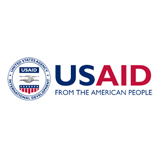
The USAID Health Care Improvement Project (HCI) is supporting the Ministry of Health (MoH) in Uganda to demonstrate improving the quality of maternal newborn child health by applying improvement methods that adapts and spreads evidence based practices across facility and community teams in central Uganda.
OBJECTIVES
The aims of this improvement program, which addresses actions
at the national, district, facility and community levels, are to:
1. Contribute to the reduction of neonatal mortality by increasing the number of newborn babies receiving essential newborn care
2. Contribute to the reduction of maternal mortality by actively managing third stage of labour to prevent postpartum hemorrhage
3. Link pregnant women to HIV services by working with facilities to ensure that pregnant women are tested for HIV and appropriately referred
INTERVENTIONS
To accomplish these objectives, HCI is supporting government systems to improve care by institutionalizing essential newborn care and the Helping Babies Breathe (HBB) newborn resuscitation program, training teams of providers in clinical aspects of care as well as in quality improvement (QI), and supporting teams to learn from each other and utilizing mechanisms to spread learning between teams.
RESULTS
Figure 1 shows results thus far for the 34 facilities participating
in this improvement program. Changes made by these sites to
improve the provision of ENC have included:
- Rationing of Tetracycline eye ointment to enable more babies to benefit from available tubes
- Using sterile surgical blades when sterile cord scissors are
unavailable - Educating mothers and caretakers during antenatal care on
birth preparedness and benefits of early breastfeeding - Increasing the number of staff who counsel mothers on
breastfeeding during the early postpartum period
CONCLUSIONS
The efforts by health workers and village health teams in Luwero and Masaka districts show that combining clinical training, quality improvement, and peer-to-peer learning has been successful
In rapidly improving maternal and newborn care at both the facility and community levels.